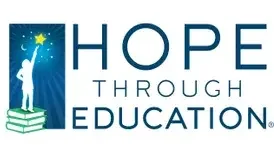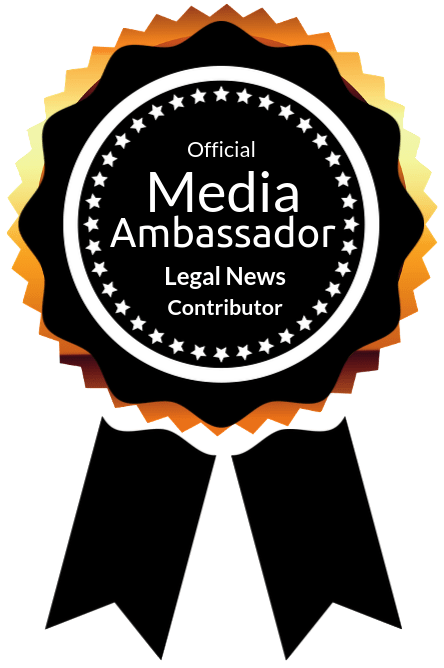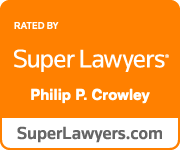Last week I had the opportunity to attend the BioMedical Engineering Day at Stevens Institute of Technology in Hoboken, New Jersey.
It reinforced for me the tremendous capabilities of this program and the opportunities for innovation that biomedical engineering provides.
Summary Points
- The BioMedical Engineering Day at Stevens Institute of Technology showcased the vast opportunities in biomedical engineering, featuring discussion of research and innovative concepts being developed.
- Panels discussed pressing issues in bioethics, the integration of artificial intelligence into biomedical engineering, and the diverse career paths of graduates, highlighting the interdisciplinary nature and ethical considerations of advancing biomedical technologies.
- The event emphasized the importance of translating academic research into real-world applications, with success stories from alumni who have utilized their biomedical engineering background in various fields.
Crowley Law continues to be excited about helping life sciences and other technology entrepreneurs realize their dreams – taking great ideas from the lab bench to the patient’s bedside and from the garage to the marketplace. If you are working on taking your great technology into the marketplace, contact us at (908) 540-6901 or [email protected] for a complimentary conversation with a team member on your challenges and opportunities.
We’re here to help.
Now, on to the event . . . .
The program began with a welcome message from Dr. Jennifer Kang- Mieler who is chair of the Biomedical Engineering Department.
Dr. Kang-Mieler was followed by a keynote lecture by my good friend and colleague, Dr. Martha Connolly, class of 1975 from Stevens, who was a member of the first undergraduate class at Stevens that included women. Dr. Connolly spoke about the benefits that she received from her Stevens education, the inspiration from her professors and staff and her fellow undergraduates.
It was a unique time for Stevens as well as for Dr. Connolly and she benefited greatly from that.
Martha went on to obtain a PhD in Biomedical Engineering from Johns Hopkins University in Baltimore and had a very successful career within the state of Maryland in creating programs for the stimulation of entrepreneurship in the life sciences there. She participated in a number of programs and processes that brought development of life sciences companies to the state as well as participating in development of several of them herself.
This was followed by a senior design pitch competition that challenged young researchers-undergraduate researchers-to pitch their ideas to the audience to see whether or not there would be uptake for what they were doing. It was fascinating to hear the extensive and sophisticated research that these undergraduates were accomplishing in connection with their academic pursuits.
The following are the Teams and their respective concepts:
HeraHealth
Concept: HeraHealth is the first smartphone app that gives women who have given birth a method of accurately, quickly, and cost-effectively quantifying postpartum blood loss. By utilizing the patient’s mobile device, the app quantifies blood volume in each woman’s postpartum pad to notify her if she has reached the hemorrhaging threshold.
Knee-sy Does It
Concept: Knee-sy Does It is creating an innovative device for joint mobilization therapy to help transform post-operative care for patients with knee flexion contracture. This is a condition where a patient cannot fully straighten the knee.
MaternaTech
Concept: MaternaTech’s goal is to design a device that can be used for 24/7 at home, patient monitoring of preeclampsia (very high blood pressure in pregnant women) utilizing a non-invasive method, arterial tonometry on the subclavian artery, to collect mean arterial pressure data.
PolypStop
Concept: PolypStop offers a novel solution that leverages cutting-edge technologies to enhance patient outcomes, reduces hospital readmissions and minimizes the economic strain on patients and healthcare providers after a polyp removal procedure.
PulsePairIt
Concept: The Pulse PairIt addresses the need for rapid vital monitoring in the neonatal intensive care unit by providing wireless, non-invasive and continuous sensing of an infant’s key biometrics that are used to make imminent life-saving decisions. It replaces bulky wired devices that are difficult to use and maintain in contact with the tiny infants.
Team AdjustaFit
Concept: Development of a Universal Prosthetic Socket Solution for Transfemoral Amputees in Underdeveloped Countries.
Team DVT: Detecting Vascular Troubles
Concept: The team’s mission is to combine a universal light-emitting-diode (“LED”) Photoacoustic device with existing clinical ultrasound instruments to empower health care providers, even those with limited training, to screen for the deadly skin cancer melanoma with greater speed and accuracy. This would greatly expand the group of healthcare professionals who could perform this potentially life-saving diagnostic test.
The Cushionettes
Concept: ‘Smart’ wheelchair cushion with pressure-sensing technology that continuously collects real-time data, redistributing pressure to prevent pressure sores in long-term wheelchair users.
WoundWatch
Concept: The WoundWatch Chronic Wound Monitoring System utilizes daily pH, temperature and blood oxygen saturation measurements obtained in the comfort of the patient’s home to aid in close monitoring of the healing the status of diabetic wounds, helping patients and doctors to better provide care.
This was followed by several panel discussions on issues that are on the front line of concerns in the life sciences and biomedical engineering community.
The first dealt with bioethics. There are tremendous opportunities for technologists to accomplish things that amend and augment the human genome and the human structure. A critical question is which ones are appropriate to pursue and which are inappropriate to pursue.
The next panel dealt with artificial intelligence and biomedical engineering. It’s another area where technology, social norms and ethics are combined to form a study that must be addressed as we move forward with technology.
Artificial intelligence is tremendously powerful and has great potential for improving human life. It also has great dangers and it’s important for us in developing systems to employ artificial intelligence to understand the dangers that may occur without appropriate controls over its capabilities.
The final panel spoke about life after the biomedical engineering degree. Many graduates of Stevens have pursued career paths that do not align directly with what they studied as undergraduates. Is that a problem? We don’t think so. It is a testament to the problem solving focus of a Stevens education that allows graduates to become successful decision makers, leaders and contributors in areas that may be different from their undergraduate pursuits.
Three panelists, George Blazeski, Dr. Martha Connolly and Dr. Drew Carlson, spoke about their work experiences that took different pathways.
My good friend, George Blazeski, is a lawyer with McCarter and English, one of the most esteemed law firms in New Jersey. He started out as a biomedical engineer but decided he wanted to help to document how to protect the intellectual property represented in those biomedical engineering research projects. So, he became a patent lawyer and uses his understanding of biomedical engineering concepts to create better, more secure patent applications for his clients.
Dr. Connolly spoke of her ability to help entrepreneurs in life sciences conceptualize ideas into commercializable products and to move them along the pathway towards realization in the marketplace. Dr. Carlson began as an engineer and transitioned into medicine as a physician. He spoke about his ability to help companies negotiate the process of dealing with the National Institutes of Health as a program manager and as a participant in fostering the development of technologies that could help thousands or millions of people.
This is the kind of development and discussion that reminded me why I established my firm.
We are passionate about helping life sciences and other technology entrepreneurs realize their dreams. To take great ideas from the laboratory bench to the patient’s bedside and to take other technology ideas from the garage to the marketplace; to enrich the lives of thousands or even millions of people. It’s what motivates us.
We have capabilities and connections with other experts in all of the areas that technology entrepreneurs need to address to succeed. If you are seeking to develop and personalize your great idea call us at (908) 540-6901 or contact us at [email protected] to sign up for the complementary discussion with one of our team members.
We’re here to help.








